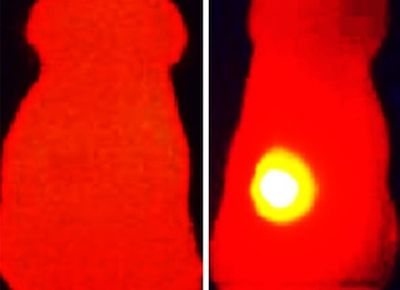Melanin protects us from the sun’s destructive rays by absorbing light energy and converting it into heat. A recent study has shown that this can make it a very effective tool for tumor diagnosis and treatment. Scientists have managed to make cell membrane-derived nanoparticles loaded with melanin, which improve tumor imaging in animal models and slow tumor growth.
Nanoparticles are considered promising weapons against tumors because tumor tissues absorb them more easily than healthy cells because of their more permeable vascular systems. A good example is the outer membrane vesicle (OMV), which is basically a small bubble surrounded by a bacterial membrane. These 20 to 200 nanometer particles are interesting because they are biocompatible, biodegradable, and can be easily and cheaply produced in bacteria even in large numbers. Once loaded with medicinal active agents, they are easy to administer.
(Figure from: Copyright Vipul Gujrati / Technical University of Munich)
Dr Vipul Gujrati, the lead author of the study, explained the principle: “even in the infrared spectrum, melanin absorbs light easily. We use this light for tumor diagnosis in photoacoustic imaging. It also converts this absorbed energy into and then emits heat. Heat is also a way to fight tumors – a method that other researchers are currently exploring in clinical trials.”
Photoacoustics is a method promoted by Ntziachristos, which combines the advantages of optical imaging and ultrasonic technology. A weak laser pulse gently heats the tissue, causing it to expand slightly for a short period of time. When the tissue cools, the tissue shrinks again to produce an ultrasonic signal. The measured signal varies according to the type of organization. Scientists use special detectors to record them and “translate” them into three-dimensional images. Sensor molecules or probes (such as OMV) can further improve the specificity and accuracy of the technique.
“Our melanin nanoparticles are suitable for the new medical field of therapeutic diagnostics – the combination of treatment and diagnosis. This could make them very important choices in clinical practice,” the author said. Scientists will now further develop their OMV, for future clinical use.

